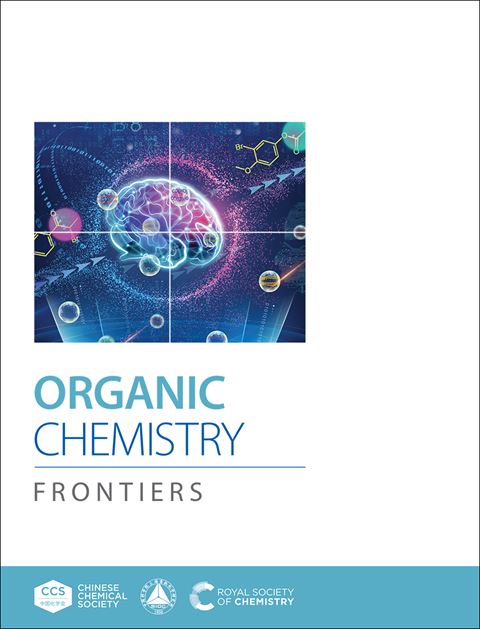Mechanistic and Machine Learning Insights into Borrowing Hydrogen Reactions Catalyzed by Transition Metal Complexes with N-Heterocyclic Ligands
IF 4.7
1区 化学
Q1 CHEMISTRY, ORGANIC
引用次数: 0
Abstract
Pyrazole-based transition metal complexes have attracted increasing attention in borrowing hydrogen (BH) reactions, particularly when employing the metal–ligand cooperation (MLC) strategy to achieve high activity and selectivity. However, a systematic understanding of their mechanistic selectivity and the factors governing catalytic performance remains lacking. Herein, the BH reaction of alcohols catalyzed by such complexes was investigated using density functional theory (DFT) calculations in combination with machine learning (ML) methods. Three possible pathways—N₂-site-assisted, O-site-assisted, and N₁-site-assisted—were proposed, among which the N₂-site-assisted route was identified as the most favorable. Both the dehydrogenation and hydrogenation steps proceed via an outer-sphere concerted transfer mechanism. Distortion/interaction analysis revealed that the ligand-assisted distortion energy plays a decisive role in determining the activation barrier. Furthermore, an ML model with high predictive accuracy (R² = 0.96) was established to correlate catalytic performance with electronic and steric descriptors. Feature importance analysis identified the HOMO energy level, dipole moment, and molecular volume as key factors, reflecting the roles of electron-donating ability, transition-state polarization, and steric effects, respectively. This study not only deepens the mechanistic understanding of MLC-enabled BH reactions catalyzed by pyrazole-based transition metal complexes but also provides a predictive framework for the rational design of efficient and tunable catalysts.过渡金属配合物与n -杂环配体催化的借氢反应的机制和机器学习见解
吡唑基过渡金属配合物在借氢反应(BH)中引起了越来越多的关注,特别是在采用金属配体配合(MLC)策略以获得高活性和选择性时。然而,对它们的机械选择性和控制催化性能的因素仍然缺乏系统的了解。本文采用密度泛函理论(DFT)和机器学习(ML)相结合的方法研究了此类配合物催化的醇的BH反应。提出了三种可能的途径- N₂位点辅助,o位点辅助和N₁位点辅助,其中N₂位点辅助途径是最有利的。脱氢和加氢步骤都是通过外球协调转移机制进行的。畸变/相互作用分析表明,配体辅助畸变能对激活势垒的确定起决定性作用。此外,建立了一个预测精度高(R²= 0.96)的ML模型,将催化性能与电子和空间描述符联系起来。特征重要性分析发现HOMO能级、偶极矩和分子体积是关键因素,分别反映了给电子能力、过渡态极化和空间效应的作用。该研究不仅加深了对基于吡唑的过渡金属配合物催化mlc的BH反应机理的理解,而且为合理设计高效可调催化剂提供了预测框架。
本文章由计算机程序翻译,如有差异,请以英文原文为准。
求助全文
约1分钟内获得全文
求助全文
来源期刊

Organic Chemistry Frontiers
CHEMISTRY, ORGANIC-
CiteScore
7.90
自引率
11.10%
发文量
686
审稿时长
1 months
期刊介绍:
Organic Chemistry Frontiers is an esteemed journal that publishes high-quality research across the field of organic chemistry. It places a significant emphasis on studies that contribute substantially to the field by introducing new or significantly improved protocols and methodologies. The journal covers a wide array of topics which include, but are not limited to, organic synthesis, the development of synthetic methodologies, catalysis, natural products, functional organic materials, supramolecular and macromolecular chemistry, as well as physical and computational organic chemistry.
 求助内容:
求助内容: 应助结果提醒方式:
应助结果提醒方式:


